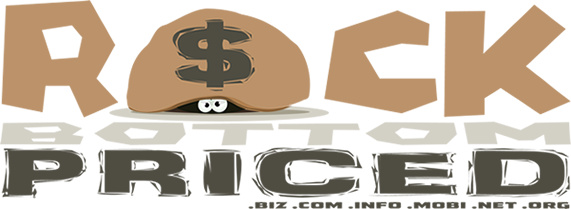
Does domain name terminology sound like a foreign language? If so find out more about what all that terminology means.
What Is A Domain Name?
When the internet was first created IP addresses were used to point to servers where files existed. But when the internet went public that was going to be a difficult way to know how to get to someone’s website. So the concept of a domain name was created. This is how dictionary.com defines a domain name:
Domain name: a name owned by a person or organization and consisting of an alphabetical or alphanumeric sequence followed by a suffix indicating the top-level domain: used as an internet address to identify the location of particular web pages
dictionary.com
The domain name system was created to organize how these domain names would be structured. A domain name is made of several parts. Most websites begin with www., then the name like rockbottompriced, and then .com, .info, .net, .org. The combined website address then looks like this: www.rockbottompriced.com.
When you purchase a domain name, you have to decide what name you want it to be. That’s the rockbottompriced portion of the domain. Then you have to decide what top level domain you want. That’s the .com part of the domain name. Now that you’ve been introduced to some of the terminology used when talking about domain names, let’s look more closely at some other domain name related terminology.
Top Level Domain
Top Level Domain (TLD) is terminology referring to the .biz, .com, .info, .mobi, .net, .org, .gov, .edu part of a domain name. Most top level domains have guidelines for their usage but are available to most any registrant anywhere in the world. In our example above we are using the .com top level domain.
Second Level Domain
A second level domain is terminology to refer to the part of the domain name that is defined by you when you register a domain name. In our example above rockbottompriced is a second level domain.
Terminology for Processes Related to Domains
Now let’s explain: domain name registration, domain name transfer, and domain name renewal.
Domain Name Registration Terminology
Domain name registration is the process you follow to acquire a domain name for yourself. It starts with you picking a domain name (second level domain) and entering that into the search box. Next, you pick the top level domain (TLD). We recommended you start with .com. Then you submit the search. If the domain is available you can register it. If it’s not available, you can try a different top-level domain such as .net, .info, .org, .biz. Or try a variation of your initial domain name.
Once you find one available, you add it to your cart and complete the purchase process. Upon completion of the domain purchase, your new domain name will be registered in your name and belong to you. We don’t own your domain name. You own the domain. We just register it for you.
Domain Name Renewal Terminology
The domain name renewal process is fairly straightforward. Each domain name is registered for a certain number of years usually one or two years. When the registration period ends, you must renew the registration to keep the domain name. The renewal process is as simple as clicking a button to pay for another year of domain name registration.
Domain Name Transfer Terminology
The domain name transfer process is a bit more complicated to explain. Say you registered a domain name with registrar x and then later decided to have your website and domain hosted by registrar y, you would have to transfer the domain from registrar x to registrar y. This process takes a several days to complete and usually involves you having to verify and authorize that you want the domain name transferred.
Domain Name Terminology: Conclusion
Hopefully, now you have a better understanding of domain name terminology. And the process of finding and registering a domain name doesn’t seem so daunting.
